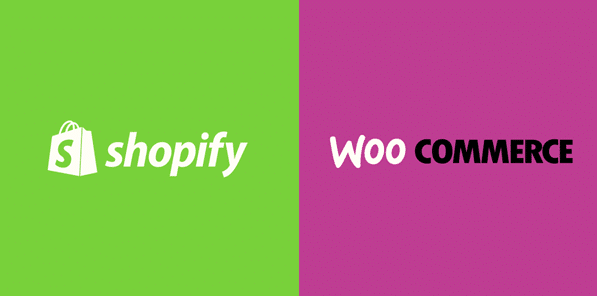
WooCommerce versus Shopify – to lay it out plainly, these are two of the most famous and simple to-utilize eCommerce stages accessible available.
Both WooCommerce and Shopify have different qualities and can be the ideal answer for you to fabricate an eCommerce store with. Furthermore, the best news is that you can do so completely all alone, with no assistance from proficient fashioners and additionally engineers.
To start with, which one of the two is going to accommodated your particular needs better, Shopify or WooCommerce (for making a fabulous online shop)? Which is more element rich? Which is less expensive? Which is better-looking? Which is progressively adaptable? Which is the most straightforward to work with?
We have loads of inquiries to get to, however we’re going to answer them all in this top to bottom examination. In the wake of understanding it, you will know precisely which web based business stage to pick dependent on your individual needs.
WooCommerce vs Shopify:Pros and Cons
WooCommerce
Best single stage to run online business and offshoot website under one rooftop. Wonderful plan and topics with enough highlights to sell, and mixes for advertising robotization.
In any case, it requires a touch of specialized data to fire up and getting client service can turn into a hover jolt; because of an issue with not handling orders, I reached WooCommerce, they guided me to Braintree (installment passage) where I was coordinated to PayPal, and Paypal sent me round trip, back to WooCommerce.
Pros:
- You have full improvement power over your store and substance
- The truck and WP are free
- WordPress is useful for content showcasing through SEO
- 1-Click Selling Apps Available
- Sizable people group with loads of WordPress specialists accessible
Cons:
- Applications, WordPress modules, and facilitating can be expensive.
- Need to manage habitual pettiness for investigating
- Need a touch of specialized information to work
- Getting important help can be a hard game
Shopify
Shopify is the best stage for outsourcing and multi-channel selling. On the off chance that you will depend on Facebook Ads or IG promoting – this is the most ideal decision. It’s more turnkey and apprentice well disposed. In any case, it isn’t too incredible for enormous stores and the SEO highlights for content are not as extraordinary as WooCommerce’s. It additionally needs more plan adaptability in the blog segment.
Pros:
- You don’t need to manage specialized support and security
- Simple joining with numerous selling channels
- Very simple arrangement
- Heaps of affirmed accomplices to support you
- It has talk and telephone support
Cons:
- Unbending item URL
- Less customization and plan adaptability like WooCommerce’s
- Not many free topics.
- Applications can include and turn out to be exorbitant
- Offer the riches mindset oCommerce
What amount do WooCommerce and Shopify cost?
Shopify has set valuing, though WooCommerce is increasingly adaptable. Shopify’s costs go from $29 to $299 every month. You open further developed highlights, similar to proficient reports, as you overhaul. WooCommerce is free, however accompanies additional expenses, including facilitating, an area name, and security.
Shopify’s set estimating plans make it simple to follow your spending. Then again, WooCommerce is an open-source programming, which makes it allowed to introduce. Be that as it may, you’ll have to pay for:
- Facilitating ($35 – $50/month)
- Security ($0 – $200/year)
- Space ($10 – £20/year)
- Expansion charges ($0 – $100/month)
Those charges above must be completely remembered for your Shopify plan. For this segment, we’ll contrast Shopify’s estimating plan and Bluehost’s valuing plans, since it’s the facilitating supplier we suggest utilizing for all WordPress destinations. Look at the table beneath for a snappy review.
Shopify versus WooCommerce: Pricing
| Shopify | WooCommerce |
| Basic ($29/month) | Starter ($13.99/month) |
| Shopify ($79/month) | Plus ($17.99/month) |
| Progressed Shopify ($299/month) | Pro ($31.99/month) |
Shopify offers a 14-day free preliminary, and Bluehost offers a 30-day unconditional promise in case you’re not upbeat. Furthermore, both Shopify and WooCommerce give venture level value plans which are just accessible using statement, and just reasonable for big business measured organizations.
Considering perspectives including value plans, programming establishment expenses, and exchange charges, Shopify scored 3.5/5 in our incentive for cash research class, while WooCommerce scored 4.4/5.
WooCommerce versus Shopify – Design
For sites (especially online business stores) plan is everything. Clients just don’t confide in a site that doesn’t have the correct tasteful or doesn’t work just as it should.
How Shopify Does Design
One of Shopify’s most noteworthy selling focuses is the visual nature of its topics. As I would like to think, they peer incredible out of the crate. Shopify accompanies over 54 distinctive store layouts, of which 10 are free. Additionally, is that every one of the Shopify topics has interesting varieties. Hence, you’re getting more than 100 separate plans.
Best of all, they are on the whole versatile responsive and have a wide range of shading alternatives. They have an elegantly smooth and clean stylish, which makes it ideal for present day, ground breaking sites.
WooCommerce versus Shopify theme
Shopify’s plans aren’t made in-house, coincidentally. They’re re-appropriated to a gathering of expert website specialists who guarantee they’re as current and as connecting with as they can be. We like this methodology since you get inventiveness from a wide assortment of organizations and individuals, making for a superior choice.
Tragically, the sticker prices on the premium Shopify topics go as high as $180. In any case, what you get in return is an incredible structure.
Fortunately, there are free choices accessible as well.
The moment fascination of Shopify structures can make numerous website admins select similar topics. Some Shopify clients who have planned a webpage themselves have later grumbled of looking excessively like different sites. Hence, customization is energized.
Fortunately, Shopify subjects are anything but difficult to change. You can rapidly alter hues and styles, while progressively adroit engineers can use the stage’s specific ‘Fluid’ language to roll out increasingly significant improvements and truly make a brand stick out.
What’s more, stunningly better, they do offer a Theme manager inside the stage that you can use for customization. You can decide to conceal segments inside the topic editorial manager without expelling them. Shrouded areas will in any case be customisable in the topic supervisor yet not noticeable on the customer facing facade end. This permits you to begin areas for future discharges and evacuate the requirement for subject duplications ( a typical issue most designers face with WordPress).
How WooCommerce Does Design
Similarly as with numerous different parts of the WooCommerce experience, with regards to style, anything is possible for you. You simply need to place the hours in.
WooCommerce is a module made by the designers from WooThemes (and procured via Automattic). All things considered, it doesn’t convey a particular structure characteristics all alone. What it does is gives you the way to sell items and administrations on the web. The structure part, be that as it may, is left to your current or future WordPress subject.
WooCommerce has been worked to help out most subjects available, given that they adhere to the standard suggestions and best practices.
This implies, by and large, you can choose any WordPress subject that you like, and still make it cooperate with WooCommerce.
Nonetheless, you will likewise run over topics that have been worked in light of WooCommerce as it so happens and are customized to make all your item/administration postings look extraordinary. If the plan of the eCommerce store itself is especially critical to you, you should search for subjects that are explicitly made for WooCommerce.
The spot to begin would be Woo’s default online store topic called Storefront (free). It’s an extremely effective creation that emphasizes all the significant components of an eCommerce store.
You can likewise get a scope of youngster subjects for Storefront on the off chance that you need to redo the appearance of your store further. The greater part of the kid subjects are accessible at $39 a piece (infrequently, however, there are WooCommerce topics with sticker prices as high as $119). In case you’re a designer with web based business customers, they have a bundle for $399 where you get the entirety of the topics in the library.
Aside from that, you can likewise investigate commercial centers like ThemeForest where they have several other WooCommerce-good topics.
To be completely forthright, WooCommerce has a genuine bit of leeway over Shopify with regards to structures. Shopify has magnificent topics, yet they’re restricted to what you can discover in the Shopify Theme Store. WooCommerce, then again, is opensource so huge amounts of engineers sell (or part with) mind boggling WooCommerce topics for a wide range of businesses and purposes.
Shopify versus WooCommerce: A gander at their highlights
These are the visual cues of the Shopify versus WooCommerce confrontation, so watch out for your preferred highlights:
| SHOPIFY | WOOCOMMERCE |
| Offers three unique designs for its clients, beginning at $29 per month. | Completely free, even though you should buy your own facilitating. |
| Accompanies a free myshopify.com subdomain for all Plans. | does exclude a free space – you have to purchase your own. |
| Empowers you to add boundless items to your store. | Also bolsters a boundless number of items. |
| Charges you explicit expenses for all your payments. | Payment charges rely upon which installment processors you choose to include. |
| The stage offers its application shop – both free and paid – which empowers clients to expand the usefulness of their stores. | Comes with an augmentation framework (essentially equivalent to WordPress modules) which gives extra usefulness to your store. Augmentations come in both free and premium assortments. |
| day in and day out support. | The designers behind WooCommerce offer help through an assistance work area for their clients, just as broad documentation for the product. |
| Many premium subjects are accessible to redo the look and feel of your site. | There are many premium and free topics for WooCommerce. |
| Incorporates a Secure Socket Layer (SSL) endorsement close by all its plans. | Includes SSL support (insofar as you’ve acquired your testament). |
| Highlights its investigation framework, and can likewise be coordinated with Google Analytics. | Can be incorporated with Google Analytics utilizing a module. |
Just to point you the correct way, some time prior, we thought about the top facilitating suppliers in the internet business space – the best has for a wide range of web based business locales. Long story short, in case you’re searching for a reasonable arrangement that will have the option to deal with your WooCommerce arrangement, look at SiteGround – they will give you an appropriate facilitating plan for $3.95/month. (They’ll additionally deal with setting up the site for you, however that is another story.)
Who utilizes those platform?
Shopify is the home of more than 1,000,000 dealers offering everything from tweaked skateboards to child cordial adornments (truly, that is a thing). It powers both little activities and prestigious names, for example, Lollapalooza and Party Rock’s dress channel.
How about we investigate one Shopify client who has utilized its highlights right to progress.
So Young utilizes MailChimp through their Shopify coordination to convey focused on promoting efforts. They deal with their bookkeeping utilizing the outsider Xero application – which likewise accompanies a Shopify joining – in this way making the most out of Shopify’s wide inventory of applications.
A lot of notable names depend on WooCommerce for their online deals channels, for example, Ripley’s Believe It or Not! what’s more, New Balance. To more readily comprehend what the stage can offer, how about we investigate a genuine use case:
Shopify versus WooCommerce: Which one is directly for you?
We’ve made it to the furthest limit of the Shopify versus WooCommerce fight, and now it’s an ideal opportunity to figure out which stage is best for you:
- Shopify is the best approach for clients who would prefer not to manage a convoluted arrangement procedure and need premium help. The administration ensures a smooth ride to the detriment of a month to month membership.
- WooCommerce can go blow-for-blow with Shopify and beat the competition because of its innate adaptability. Be that as it may, its arrangement procedure is more muddled and will expect you to get your hands grimy. It’s ideal for those of you who have a liking for open-source programming and need to modify each part of your experience.
It’s entirely typical to feel scared by the decision of which online business stage to pick. Running an online store is a monstrous endeavor, and picking an inappropriate one might disable your activity directly from its commencement.
Both Shopify and WooCommerce are extraordinary stages on their right – albeit each has its arrangement of advantages and disadvantages. For whatever length of time that you go with whichever one suits your requirements the best, you’ll have settled on the correct choice.

